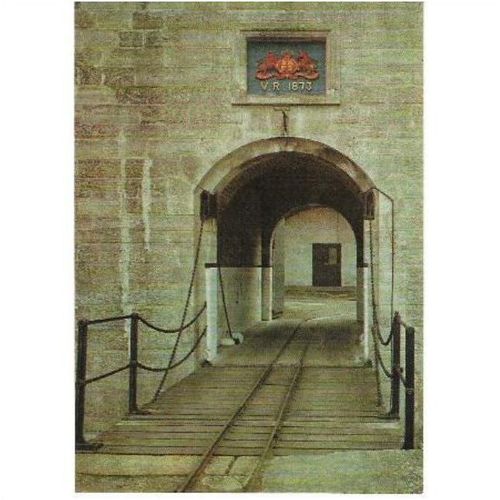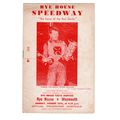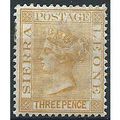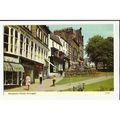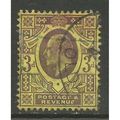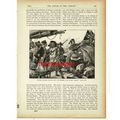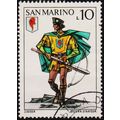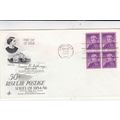Hurst Castle, Hampshire - entrance to 19th Century Fort - official postcard
- Condition : Used
- Dispatch : 2 Days
- Brand : None
- ID# : 125000524
- Quantity : 1 item
- Views : 433
- Location : United Kingdom

- Seller : justthebook (+1699)
- Barcode : None
- Start : Fri 28 Feb 2014 05:18:38 (EDT)
- Close : Run Until Sold
- Remain : Run Until Sold
Checks/Cheques
 for 1 item(s) edit
for 1 item(s) edit
Shipping Calculator
More Listings from This Seller view all
Seller's Description
- Postcard
- Picture / Image: Entrance to the late 19th Century Fort, Hurst Castle, Hampshire
- Publisher: Department of Environment / HMSO
- Postally used: no
- Stamp: n/a
- Postmark(s): n/s
- Sent to: n/s
- Notes / condition:
Please ask if you need any other information and I will do the best I can to answer.
Image may be low res for illustrative purposes - if you need a higher definition image then please contact me and I may be able to send one.
------------------------------------------------
Postage & Packing:
UK (incl. IOM, CI & BFPO): 99p
Europe: £1.60
Rest of world (inc. USA etc): £2.75
No additional charges for more than one postcard. You can buy as many postcards from me as you like and you will just pay the fee above once. (If buying postcards with other things such as books, please contact or wait for invoice before paying).
Payment Methods:
UK - PayPal, Cheque (from UK bank) or postal order
Outside UK: PayPal ONLY (unless otherwise stated) please. NO non-UK currency checks or money orders (sorry).
NOTE: All postcards are sent in brand new stiffened envelopes which I have bought for the task. These are specially made to protect postcards and you may be able to re-use them. In addition there are other costs to sending so the above charge is not just for the stamp!
I will give a full refund if you are not fully satisfied with the postcard.
----------------------------------------------
Text from the free encyclopedia WIKIPEDIA may appear below to give a little background information (internal links may not work) :
*************
Hurst Castle on the south coast of England is one of Henry VIII's Device Forts, built at the end of a long shingle spit at the west end of the Solent to guard the approaches to Southampton. Hurst Castle was sited at the narrow entrance to the Solent where the ebb and flow of the tides creates strong currents, putting would-be invaders at its mercy. Also known as a Henrician Castle, Hurst was built as part of Henry's chain of coastal defences to protect England during the turbulent times of his reign.
Charles I was imprisoned here in 1648 before being taken to London to his trial and execution. The fort was modified throughout the 19th century, and two large wing batteries were built to house heavy guns. It was fortified again in World War II and then decommissioned. It is now owned by English Heritage and is open to the public.
Hurst Castle is a fort consisting of a circular stone tower strengthened by semicircular bastions of later dates.[1] It was erected by Henry VIII to defend the approach to Southampton Water against the French.[1] The recommendation that a castle be built on Hurst Point was made in 1539 by William FitzWilliam, 1st Earl of Southampton and William Paulet, 1st Marquess of Winchester.[2] By 1540 some kind of fortification existed but details are scant.[2] The work on the castle proper took several years and was finished by the end of 1544. The first captain of the castle was Thomas Bertie.[1] In 1561 Thomas Carew was captain. The establishment at that time consisted of the captain, his deputy, porter and a master gunner, a ""deputy's man,"" eight soldiers, another for the porter and eleven gunners.[1] Thomas Carew was succeeded on his death by Sir Thomas Gorges, who in 1593 petitioned for the repair of the platforms, which were so decayed as to be incapable of supporting the guns.[1] Sir Edward Gorges, afterwards Baron Gorges of Dundalk, succeeded his father as captain in 1610.[1] The castle seems to have continued in a somewhat inefficient state, and in 1628 when the porter was ordered to stay a ship, though he was ""very willing"" he ""had neither powder nor shot to do it with, and of his twenty-seven pieces of ordnance not above four or five would do any service, and they but for a shot or two.""[1] In 1635 most of the bronze ordnance in the castle was exchanged for iron.[1] At the beginning of the English Civil War in 1642, the castle was occupied, in the absence of the captain, by Captain Richard Swanley on behalf of the Parliamentary forces. It was the last prison of Charles I before being moved to Windsor prior to his trial; he was brought here on the last day of November 1648 from Newport.[1] Lord Gorges was succeeded in the captaincy by Colonel Thomas Eyre, who in 1650 secured a grant of further ordnance and an increase in the number of soldiers stationed there.[1]
In the year following the Restoration Colonel Eyre lost his post, and Edward Strange was appointed captain, the office of governor being allowed to lapse.[1] In January 1661 Charles II ordered the garrison to be disbanded and an estimate made of the expense of demolishing the castle; the latter idea was, however, speedily dropped, and five months later, although the forces were paid off, arrangements were made for additions involving an increase in the annual expenditure.[1] In 1666 it was decided that the castle should be garrisoned by men from Sir Robert Holmes' company on the Isle of Wight.[1] This was not done until 1671 owing to the state of disrepair in which the castle was. Sir Robert, who was governor of the Island, reported that there was scarcely a gun mounted and no stores or provisions in the castle; nothing, however, was done, and three years later he wrote complaining that there was hardly a room not fallen in and into which the rain did not come. Repairs were then taken in hand and the garrison established, Captain Strange becoming governor.[1] In 1675 a master gunner and three other gunners were added to the establishment, there being then nearly thirty guns mounted at the castle. In the same year Sir John Holmes petitioned for leave to purchase the governorship, and this being granted him he was appointed to the post.[1] Captain Roach, who was captain of the castle at this time, having murdered a certain Lieutenant Newman, fled to Yarmouth, and borrowing a black cloak took boat to Hurst, where he was arrested.[1] In 1689 Henry Holmes was appointed to the captaincy.[1]
On 8 May 1700 the Privy Council ordered that Hurst Castle be used as a prison for priests convicted of fostering the growth of Catholicism (""popery"").[3] On 26 September a Franciscan, Father Paul (Matthew) Atkinson, was convicted and sent to Hurst where he remained nearly 30 years, before dying in 1729.[3] Atkinson seems to have been the only priest ever sent to Hurst, although the Privy Council Register entry for 1719 claims that another priest, Anthony de la Porte, was, at least, supposed to have been sent to Hurst Castle.[4]
By the latter 18th century, Hurst Castle had become negelected to such an extent that it was being used as a rendezvous for smugglers led by a notorious character by the name of John Streeter.[5] William Arnold, Collector of Customs at Cowes, considered it necessary in 1783 to request ""a King's cutter also in Hurst Road ... to keep off the large cutters from landing their goods for three or four days at a time ... to ruin the Trade, because the expense of keeping a large number of men and horses collected together waiting the arrival of goods must materially diminish the profits arising from their sale.""[6] At the end of the 18th century, the first steps to refortification were begun, when earth-protected gun batteries were added.[7]
The fort's tower was rebuilt around 1805/6,[8] when it was vaulted to support six 24-pounder guns,[7] during the Napoleonic Wars. In the 1850s the dock was built as well as the west battery.[8] Recommendations by the 1859 Royal Commission report,[9] led to the castle being refortified, and two large wing batteries were built to house 30 heavy guns.[8] In 1873 a new east wing was built and a new entrance to the castle was driven through the northeast bastion.[8] Around 1889 the magazine roof was reinforced with more concrete; the staircases and rooms within the tower were rebuilt; and the tower roof was adapted for modern gun mountings.[8] A coastal battery was built in 1893.[8]
By December 1902 the battery was armed with three 12-pounder and three 6-pounder quick-firing guns and ten 12.5-inch and fifteen 10-inch rifle muzzle-loading (RML) weapons.[9] In 1905 the RML and 6-pounder guns were removed from the armament.[9] The battery was closed in 1928,[9] but the castle was retained by the War Office until 1933 and then handed over to the Ministry of Works.[8]
The fort was recommissioned again for World War II.[9] By 1941 it was armed with two 12-pounder and two 6-pounder quick-firing guns.[9] Soldiers were stationed at Hurst Castle, and wall paintings have been found in the west wing battery which was used as a theatre.[8] By 1947 the battery was equipped only with two 6-pounder guns.[9]
The castle is now owned by English Heritage and is open to the public.
type=printed postcards
theme=topographical: british
sub-theme=england
county/ country=hampshire
number of items=single
period=1945 - present
postage condition=unposted
Listing Information
| Listing Type | Gallery Listing |
| Listing ID# | 125000524 |
| Start Time | Fri 28 Feb 2014 05:18:38 (EDT) |
| Close Time | Run Until Sold |
| Starting Bid | Fixed Price (no bidding) |
| Item Condition | Used |
| Bids | 0 |
| Views | 433 |
| Dispatch Time | 2 Days |
| Quantity | 1 |
| Location | United Kingdom |
| Auto Extend | No |

